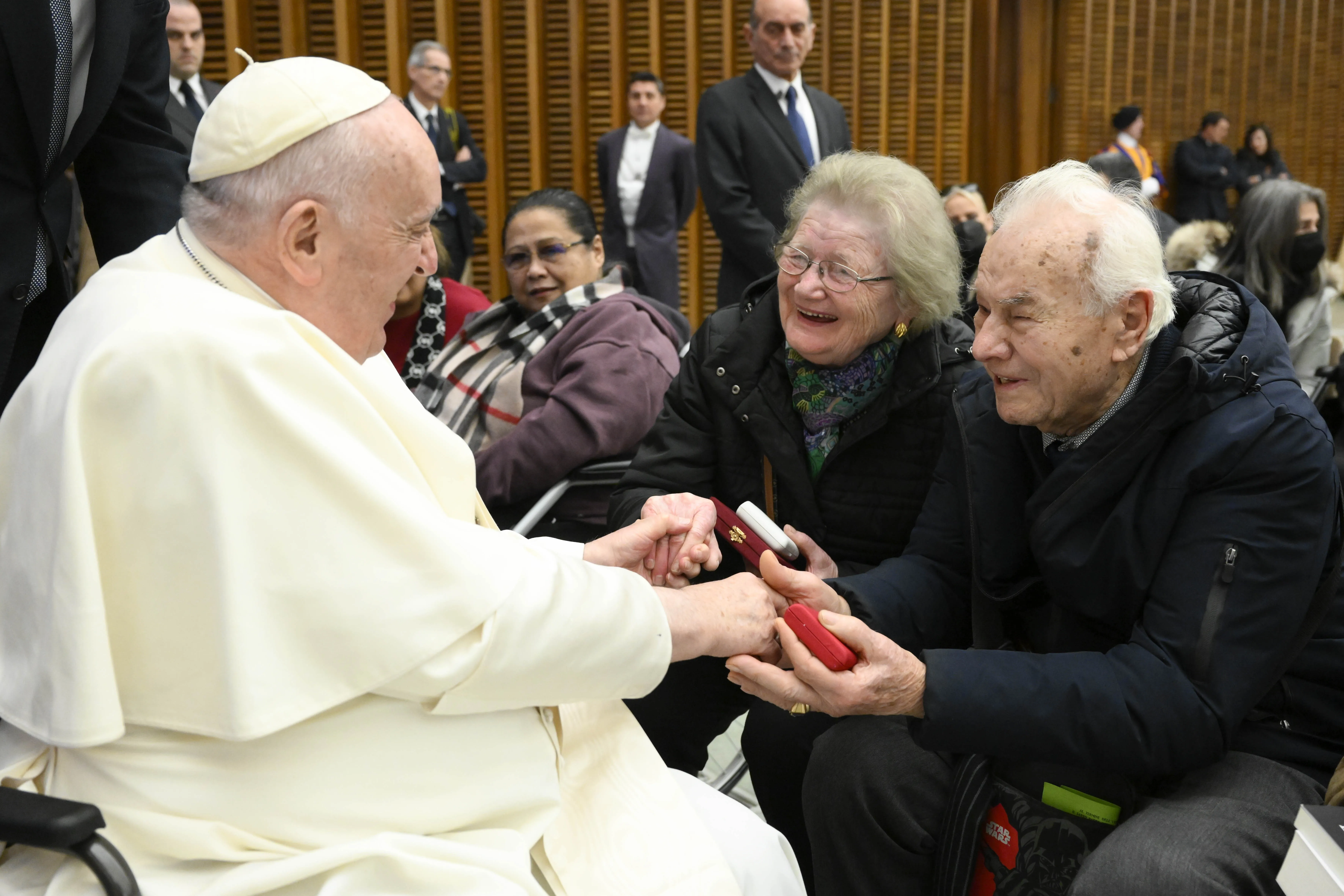
Vatican City, Jan 11, 2023 / 04:00 am (CNA).
We do not have to be perfect already to live in a way that gives witness to Christ and attracts others to him, Pope Francis said on Wednesday.
At his weekly public audience on Jan. 11, Francis reflected on Jesus’ calling of St. Matthew, then a tax collector, to follow him as one of his 12 apostles.
“Here is the message for us: we do not have to wait until we are perfect and have come a long way following Jesus to witness to him; no, our proclamation begins today, there where we live,” he said.

Speaking in the Vatican’s Paul VI Hall, Pope Francis emphasized that evangelization and proselytism are not the same.
“And it does not begin by trying to convince others, but by witnessing every day to the beauty of the Love that has looked upon us and lifted us up,” he said.
Francis recalled a line from a homily given by Pope Benedict XVI at a meeting of Latin American and Caribbean bishops in Aparecida, Brazil, in 2007: “The Church does not engage in proselytism. Instead, she grows by ‘attraction.’”
“Do not forget this,” Pope Francis added, calling Christians who proselytize “pagans dressed as Christians.”

The pope’s general audience message was the first in a new series of catechesis, or teachings, on apostolic zeal.
“It is a vital dimension for the Church,” he explained. “It can happen, however, that the apostolic ardor, the desire to reach others with the good news of the Gospel, diminishes.”
“When Christian life loses sight of the horizon of proclamation, it grows sick,” he continued, “it closes in on itself, becomes self-referential, it becomes atrophied. Without apostolic zeal, faith withers. Mission, on the other hand, is the oxygen of Christian life: it invigorates and purifies it.”
The pope said the way in which Jesus called St. Matthew to leave his former life behind is an example for Christians today.

He recalled that Matthew, as a tax collector for the Roman empire, would have been viewed by others as a “publican” and a traitor to the people.
“But in the eyes of Jesus, Matthew is a man, with both his miseries and his greatness,” he said.
Jesus, Francis emphasized, does not see someone as the “adjectives” which are used to describe him or her, but as a person.
“We can ask ourselves: how do we look upon others? How often do we see their faults and not their needs; how often do we label people by what they do or think,” he said. “Even as Christians we say to ourselves: is he one of us or not? This is not the gaze of Jesus: He always looks at each person with mercy, actually, with predilection.”
“And Christians,” Pope Francis said, “are called to do as Christ did, looking like him, especially at the so-called ‘distant ones.’ Indeed, Matthew’s account of the call ends with Jesus saying, ‘I have not come to call the righteous, but sinners.’”
If you value the news and views Catholic World Report provides, please consider donating to support our efforts. Your contribution will help us continue to make CWR available to all readers worldwide for free, without a subscription. Thank you for your generosity!
Click here for more information on donating to CWR. Click here to sign up for our newsletter.




Leave a Reply